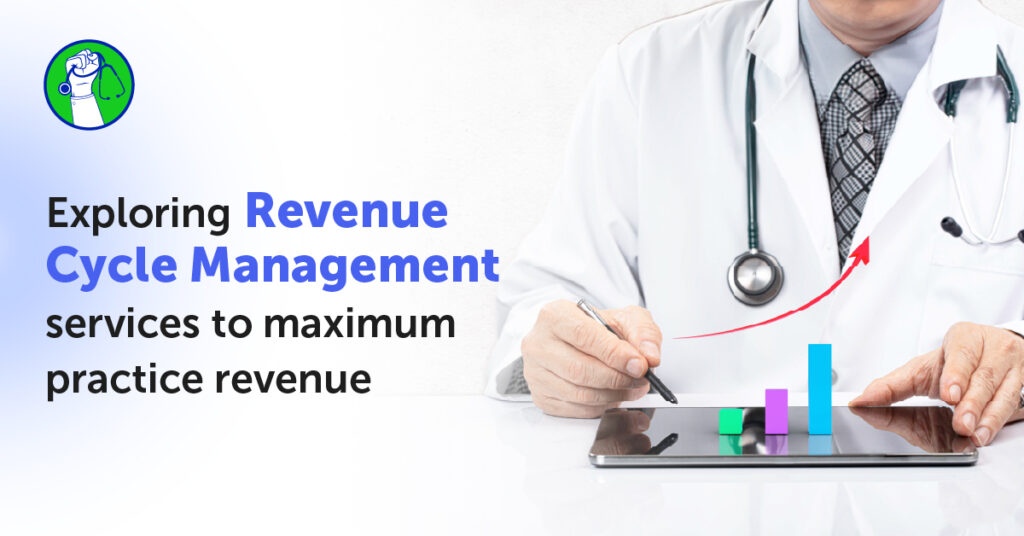
In today’s rapidly evolving healthcare landscape, financial stability and operational efficiency are crucial for the sustainability of medical practices and hospitals. Effective healthcare revenue cycle management (RCM) serves as the backbone of achieving these goals, streamlining the complex processes that encompass patient care and financial reimbursement. From reducing billing errors to improving cash flow, exploring the nuances of revenue cycle management services can significantly enhance your practice’s profitability while enabling you to focus on delivering quality patient care.
Understanding the Healthcare Revenue Cycle
The healthcare revenue cycle involves a series of interconnected processes, starting from patient registration and ending with the collection of final payments. These steps ensure that providers are appropriately reimbursed for the care they deliver. However, inefficiencies in this cycle—such as coding errors, claim denials, and outdated billing practices—can lead to financial losses and administrative burdens.
This is where revenue cycle management companies step in to optimize financial operations and efficiency. By utilizing their expertise, providers can optimize their billing and reimbursement workflows, ensuring a smoother revenue cycle management process and reducing overhead costs.

Why Revenue Cycle Management is Crucial
The importance of effective RCM in medical billing cannot be overstated. It secures timely payments and ensures compliance with evolving regulations and payer requirements. Key benefits of adopting robust revenue cycle management services include:
1.Streamlined Processes: From scheduling appointments to claim submission, the RCM process minimizes inefficiencies that delay reimbursements.
2.Improved Financial Performance: Reducing denials and errors boosts cash flow and maximizes revenue potential.
3.Compliance Assurance: Staying updated with healthcare regulations ensures adherence to payer requirements, reducing legal risks.
4.Enhanced Patient Experience: Transparent billing and simplified payment options improve patient satisfaction and loyalty.
Steps of Revenue Cycle Management
The steps of revenue cycle management outline the structured approach to optimizing financial processes in a healthcare setting:
1.Patient Registration: Accurate collection of patient demographics and insurance details.
2.Insurance Verification: Confirming coverage and eligibility to avoid future claim rejections.
3.Charge Capture: Documenting services are provided to ensure accurate billing.
4.Coding: Translating medical services into standardized codes for proper reimbursement.
5.Claim Submission: Sending clean claims to payers to reduce processing delays.
6.Denial Management: Addressing rejected claims to recover payments efficiently.
7.Payment Posting: Recording payments and reconciling accounts.
8.Patient Billing: Issuing statements and managing outstanding balances.
By effectively managing these steps, practices can minimize revenue leakage and ensure financial stability.
RCM in Medical Billing: A Game-Changer
The integration of RCM in medical billing is a game-changer for practices of all sizes. By automating tasks such as claim submissions and payment tracking, revenue cycle management companies empower healthcare providers to focus on their core competency—patient care.
For instance, hospitals with robust hospital revenue cycle management systems can handle high patient volumes without compromising on financial efficiency. Likewise, smaller practices can utilize medical revenue cycle management solutions to compete in an increasingly complex market.
RCM systems also incorporate advanced analytics to provide actionable insights, enabling providers to identify bottlenecks and optimize their workflows.
Choosing the Right Revenue Cycle Management Partner
With numerous revenue cycle management companies available, selecting the right partner is critical for success. Here are key factors to consider:
1.Experience and Expertise: Choose a company with a proven track record in managing RCM healthcare services.
2.Technology and Automation: Ensure the company uses advanced tools to automate repetitive tasks and reduce human error.
3.Customization: Opt for a partner that tailors solutions to your specific practice needs.
4.Transparency: Look for a company that provides detailed performance reports and maintains open communication.
5.Support and Training: Ensure they offer ongoing support and training to your staff for seamless integration.
Revenue Cycle Management in Hospitals
Hospitals often face unique challenges in managing their healthcare revenue cycle, including handling high patient volumes, managing multiple specialties, and adhering to stringent compliance standards. Hospital revenue cycle management services focus on optimizing these complexities by implementing centralized billing systems, reducing claim denials, and ensuring accurate documentation.
For hospitals, adopting advanced RCM healthcare solutions is no longer optional—it’s a necessity. Advanced systems handle billing and integrate with electronic health records (EHR) to streamline workflows and improve data accuracy.

The Role of Revenue Cycle Management Services in Improving Practice Revenue
Investing in professional revenue cycle management services is one of the most effective ways to maximize practice revenue. These services not only address operational inefficiencies but also provide insights into patient payment behavior, enabling practices to implement better financial policies.
Moreover, RCM healthcare solutions ensure compliance with payer contracts, reducing the risk of penalties or revenue loss. For instance, automated coding tools help eliminate errors, while real-time analytics enable providers to track key performance indicators (KPIs) and make informed decisions.
The Future of Revenue Cycle Management
The future of medical revenue cycle management lies in embracing innovation. Artificial intelligence (AI), machine learning, and predictive analytics are revolutionizing the way providers manage their revenue cycles. These technologies not only enhance accuracy but also identify potential issues before they escalate, ensuring a proactive approach to financial management.
Furthermore, patient-centric RCM solutions are gaining traction, offering features such as mobile payment options and transparent billing. This shift not only improves collections but also enhances patient satisfaction, building long-term loyalty.
Conclusion
In a competitive and highly regulated industry, efficient healthcare revenue cycle management is the cornerstone of financial success. Whether you’re a small practice or a large hospital, exploring the right revenue cycle management services can help you navigate the complexities of medical billing, improve cash flow, and enhance patient satisfaction.
By leveraging advanced technologies and partnering with experienced revenue cycle management companies, you can streamline your operations, reduce errors, and maximize your revenue potential. With the right strategies in place, your practice can thrive in today’s dynamic healthcare landscape while continuing to deliver exceptional patient care.
Take the first step toward financial success by optimizing your RCM in medical billing today. Your practice—and your patients—deserve nothing less.

